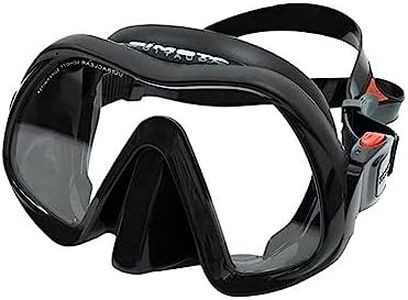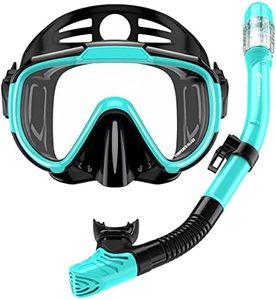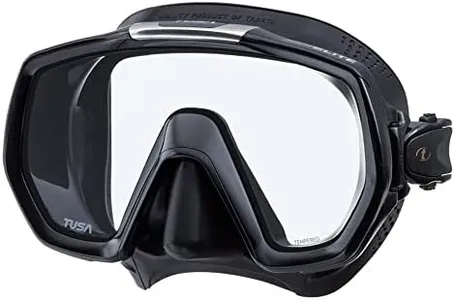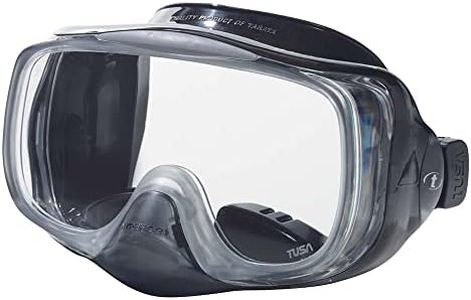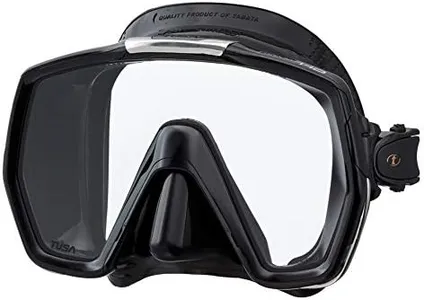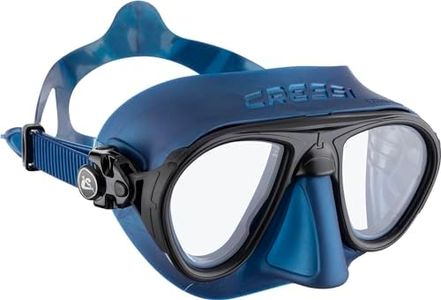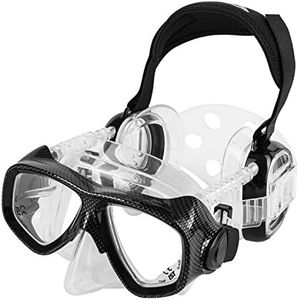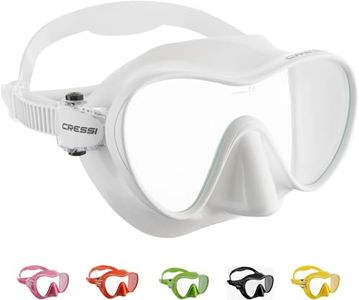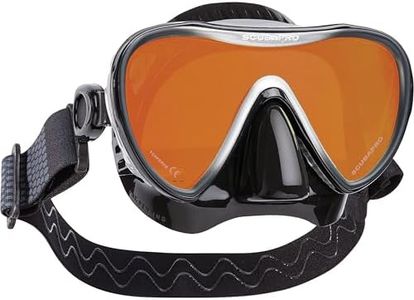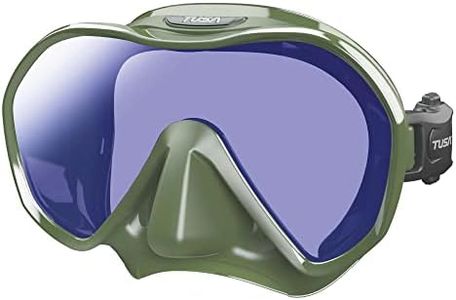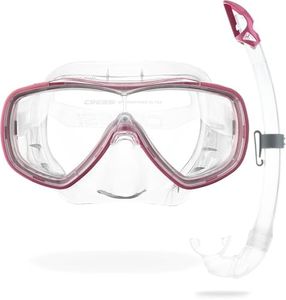We Use CookiesWe use cookies to enhance the security, performance,
functionality and for analytical and promotional activities. By continuing to browse this site you
are agreeing to our privacy policy
10 Best Scuba Diving Masks
From leading brands and best sellers available on the web.Buying Guide for the Best Scuba Diving Masks
Choosing the right scuba diving mask is crucial for comfort, visibility, and safety underwater. Your mask forms the direct interface between you and the ocean world, so it must fit well, remain comfortable for the duration of your dives, and provide clear vision. Since everyone’s face is different, it's important to prioritize fit and comfort above all, while also considering clarity, durability, and ease of use. Understanding the various features that define masks will help you avoid common issues like leaks or fogging, ensuring a much more enjoyable diving experience.Fit and SealThis refers to how well the mask sits on your face and whether it creates a watertight seal. An ill-fitting mask can leak, cause discomfort, or leave marks on your skin. Most masks come in different shapes to match various face contours. To check fit, gently press the mask to your face without using the strap and inhale—if it stays in place with gentle suction, it’s likely a good fit. People with narrow, broad, or prominent facial features may need specific shapes, so always try before you buy if possible. Picking the right fit is all about your unique face shape; a comfortable, leak-free seal should be your first priority.
Lens Type and Field of ViewA mask’s lenses can be single-pane (one uninterrupted glass) or dual-pane (two separate lenses), influencing both your field of view and how the mask feels on your face. Single-pane designs offer a wider, uninterrupted view, while dual-pane models may provide a closer fit and be compatible with prescription lenses. Some lenses curve or angle to maximize peripheral vision. If you prioritize a panoramic view or want to feel less closed in, look for wider lenses. If you need vision correction, seek masks that allow lens replacement. Consider your main activities—photographers and sightseers usually benefit from a wide view, while technical divers may focus more on fit.
Mask VolumeMask volume refers to the internal space between your face and the lens. Low-volume masks sit closer to the face, making them easier to clear of water and equalize at depth, which is especially helpful for freedivers and those who want less drag. High-volume masks feel more open inside but require more air to equalize if water enters. If you value easy equalization and less effort when mask clearing, opt for a low-volume mask. If comfort and a roomier fit are your priority, and you don't mind a little extra clearing, high-volume masks might work for you.
Skirt MaterialThe skirt is the soft part of the mask that forms a seal against your face, usually made from silicone or rubber. Silicone skirts are more durable, comfortable, and better at preventing leaks, whereas rubber is less common today. Skirt color also affects your experience—clear skirts let in more light for an open feel, while black or opaque skirts reduce glare and distractions, which can help with underwater photography. Pick silicone for the best comfort and reliability and choose skirt color depending on how much light and focus you prefer.
Straps and BucklesThe straps and buckles keep the mask securely on your head and allow you to adjust tension for comfort and seal. Modern buckles connect directly to the mask skirt, giving a better, more adaptive fit, and are easy to adjust even underwater. Wider silicone straps distribute pressure evenly and are less likely to pull hair. If you want easy adjustment mid-dive or have long hair, look for soft, wide straps and user-friendly buckles. Making sure the strap is comfortable and stays in place is especially important for extended dives.
Prescription Lens CompatibilityFor divers who wear glasses, prescription lens compatibility lets you swap standard lenses for ones with your prescription, or attach corrective lens inserts. Not all masks can do this, so check if this feature is available if you need vision correction underwater. Choose a mask that can take prescription lenses if your eyesight needs support, making your dive safer and more enjoyable.

